
The Musée de l'Homme is an anthropology museum in Paris, France. It was established in 1937 by Paul Rivet for the 1937 Exposition Internationale des Arts et Techniques dans la Vie Moderne. It is the descendant of the Musée d'Ethnographie du Trocadéro, founded in 1878. The Musée de l'Homme is a research center under the authority of various ministries, and it groups several entities from the CNRS. The Musée de l'Homme is one of the seven departments of the Muséum national d'histoire naturelle. The Musée de l'Homme occupies most of the Passy wing of the Palais de Chaillot in the 16th arrondissement. The vast majority of its collection was transferred to the Quai Branly museum.
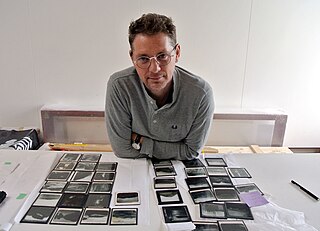
Brook Andrew is an Australian contemporary artist.

The Musée du Quai Branly – Jacques Chirac, located in Paris, France, is a museum designed by French architect Jean Nouvel to feature the indigenous art and cultures of Africa, Asia, Oceania, and the Americas. The museum collection comprises more than a million objects, of which 3,500 are on display at any given time, in both permanent and temporary thematic exhibits. A selection of objects from the museum is also displayed in the Pavillon des Sessions of the Louvre.
Allan Sekula was an American photographer, writer, filmmaker, theorist and critic. From 1985 until his death in 2013, he taught at California Institute of the Arts. His work frequently focused on large economic systems, or "the imaginary and material geographies of the advanced capitalist world."
Michael Riley was an Aboriginal Australian photographer and filmmaker, and co-founder of Boomalli Aboriginal Artists Cooperative. A significant figure in contemporary Indigenous Australian art, Riley's work is held by many public art institutions, including the National Gallery of Australia.
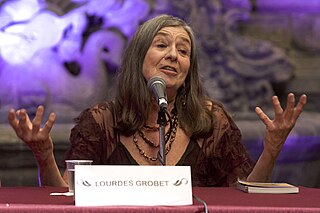
Lourdes Grobet Argüelles was a Mexican contemporary photographer, known for her photographs of Mexican lucha libre wrestlers.
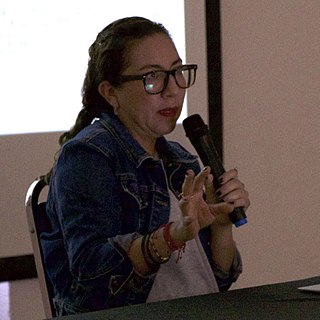
Dulce Pinzón is a Mexican artist currently living in Brooklyn, New York, Mexico City, Mexico, and Montreal, Canada. In 2015 she was named by Forbes Magazine as "One of the 50 most creative Mexicans in the world", and Vogue magazine identified her as one of the "8 Mexican female photographers who are breaking through at a global level." In 2020, the Voice of America characterized her as having "earned a prestigious place in the world of fine arts photography."
Michael Tsegaye is an Ethiopian artist and photographer. Much of his work presents a glimpse of life in contemporary Ethiopia, although an extended catalogue of his images come from his travels abroad.
Said Atabekov is a Kazakhstani artist in the fields of installation, performance and video art, and photography.
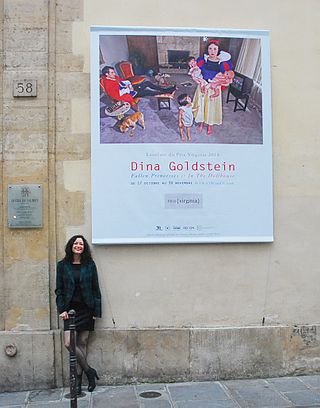
Dina Goldstein is a visual artist based in Vancouver, British Columbia, Canada. Goldstein creates tableau with a nuanced visual language that places the mundane and everyday in unusual settings to inspire insight into the human condition. Goldstein began her career over 30 years ago as a photojournalist, evolving from a documentary and editorial photographer into an independent artist focusing on large-scale productions of nuanced Narrative Photography tableaux. Her work is highly conceptual and complex social commentary; incorporating cultural archetypes and iconography from the collective common imagination with narratives inspired by the human condition. Leaning into the visual language of pop surrealism, she stages compositions that expose the underbelly of modern life, challenging the notions of cultural influence and inherent belief systems. Goldstein's alternate realities question the adaptation, the societal acceptance of fictional stories and characters inspired by ideology, politics and religion. The vivid and provocative still imagery emerges through an entirely cinematic technique, with Dina’s established methodology following a precise pre- to post production process. The artist is most known for her series "Fallen Princesses", created in 2007, which depicts humanized Disney Princesses placed in realistic, modern scenarios. The series envisions how the lives of these famous characters would have played out in the real world, and touches on such everyday scourges as poverty, obesity, cancer and pollution. Goldstein was awarded the Arte Laguna special prize in 2012. In 2014, Goldstein won the grand prize at Prix Virginia; her work was exhibited in Paris, France.

Fiona Dorothy Pardington is a New Zealand artist, her principal medium being photography.
The International Art Books and Films Festival or FILAF, is an international festival about artbooks and films which takes place annually in Perpignan since 2011. Its goal is to promote and award the best books and films about art produced each year in the world.
The Musée des Amériques, formerly known as the Musée des Jacobins, is the town museum in Auch, the capital of the Gers department in France. It is located in the old city between the riverbank and the Cathédrale Sainte-Marie d'Auch. It houses France's second biggest collection of Pre-Columbian art after the quai Branly, with which it has collaborated for many years. The museum garden is a 1600 square metre parc à la française containing plants brought back from the Americas by the Conquistadors.
Geraldo de Barros was a Brazilian painter and photographer who also worked in engraving, graphic arts, and industrial design. He was a leader of the concrete art movement in Brazil, co-founding Grupo Ruptura and was known for his trailblazing work in experimental abstract photography and modernism. According to The Guardian, De Barros was "one of the most influential Brazilian artists of the 20th century." De Barros is best known for his Fotoformas (1946-1952), a series of photographs that used multiple exposures, rotated images, and abstracted forms to capture a phenomenological experience of Brazil's exponential urbanization in the mid-twentieth century.
Valeska Soares is a Brooklyn-based Brazilian-American sculptor and installation artist.
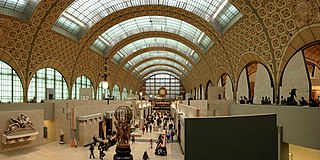
The 136 museums in the city of Paris display many historical, scientific, and archeological artifacts from around the world, covering diverse and unique topics including fashion, theater, sports, cosmetics, and the culinary arts.

Hughes Dubois is a photographer specialized in the photography of artworks.
Germain Pierre Albert Gérard Viatte was a Canadian-born French art historian and museum curator.









